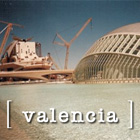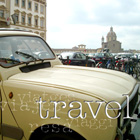
|
AMERICA'S CUP 2007 ENERGIZES HOST CITY, VALENCIA, SPAIN Spain's third largest city, Valencia, won the bid to host the America's Cup after Switzerland, a land-locked country, won the world's premier sailing event in 2003 in New Zealand. With its roots in ancient times, and a rich tapestry of medieval history, Valencia is now looking to project an image as a cutting-edge 21st century city, with global appeal. [Full Story] VALENCIA: SUNSOAKED ENLIGHTENING Spain's third largest city, Valencia is the bustling capital of the autonomous region called the Comunidad Valenciana. The surrounding landscape is laced with geometrically plotted orchards and orange groves and is famed for its agricultural richness and productivity. Throughout its varied history, Valencia has been ruled, like many Spanish cities, by a number of distinct civilizations, and now displays a commitment to blending the ancient with the modern in creating a city with an energy like no other.
Valencia is one of the Spanish regions that uses a language other than Castilian Spanish. Valenciá has roots in the development of Catalán, and is officially considered by scholars to be an offshoot of Catalán, but Valencianos will insist on the name Valenciá., as evinced by the regions's autonomous TV stations being self-pronouned "en valenciá". Nevertheless, like everywhere else in Spain, all of the natives speak Castilian Spanish as well, so tourists with a knowledge of Spanish will get along with ease. The contemporary treasure of Valencia is the stunningly unique City of the Arts and Sciences, featuring a number of abstract, bright-white, confounding architectural designs. Even before its completion, it had become the fourth most visited tourist attraction in Spain, and is now preparing to be fully operational. The complex includes the Museu de les Ciències, the Umbracle (open-air arcade entry to the complex, with botanical gardens, climbing vines), L'Hemisfèric (planetarium modeled on "the eye of wisdom"), L'Oceanogràfic (a vast and innovative aquarium, connected to the Mediterranean), and the Palau de les Arts, designed by native Valencian architect, Santiago Calatrava. This final component of the complex pays direct homage to the cultural interests of the Valencian and Spanish people. The structure will include multiple performance spaces, including a large music hall, and will provide a venue for opera, dance and theatre. During our own visit, we met a man who claimed to have been born on the site of the new planetarium in the 1920s, who said it made him misty with joy to think that his city had chosen this spot to place its contribution to world culture. The city is busy and tempestuous, streets jammed with traffic, always moving in one direction, and to the outsider, an indecipherable labyrinth. So the convenience of the Estació del Nord, the city's centric train station, cannot be overstated. Coming into Valencia by RENFE, one emerges right into the heart of the city, beside the Plaza de Toros and within blocks of the Plaça del Ajuntament.
From there, most of the main attractions are within walking distance, if not accessible by taxi or bus. The city's center combines large public plazas, lined with elegant façades and stuffed with traffic, and narrower, intimate streets and alleyways, winding toward the cathedral. The city's history extends back to the Phoenicians, and before Roman times, Valencia was inhabited by the Iberians. Greeks, Romans, Visigoths, and Muslims, all conquered and ruled Valencia throughout its history. The area was heavily influenced by Roman occupation, later enjoyed the privilege of serving as a political and financial center for Moors during their reign on the Iberian Peninsula. In historic and chivalric fashion, the famed knight El Cid Campeador, immortalized in epic poetry and folklore, recaptured the city for the Spanish Christians. It would again fall, however, to the Almoravids, and remain under Muslim control until 1238, when Jaume I of Aragón reconquered the city. Valencia was then established as a Christian kingdom, with its own legislative principles, and with autonomous powers under the protection of Jaume I. [Full Profile]
For more travel listings, original narratives and destinations, consult Sentido's sister site for travel, CavaTravel.com... |
|||||||||||||||||||||||||||||||||||||||||||||||
|
||||||||||||||||||||||||||||||||||||||||||||||||














